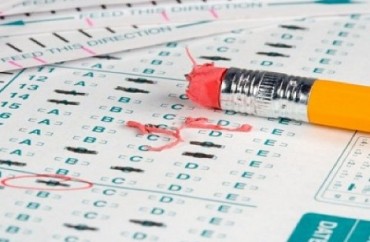No one can slay an absurd leftist idea with words, data and logic better than Heather Mac Donald. Case in point: Her latest piece in City Journal completely obliterates the recent decision by the Scholastic Aptitude Test to add an “adversity score” to SAT test takers.
 The score will consider factors such as the crime rate and poverty level of a student’s high school neighborhood. As The Wall Street Journal reported, the score will be displayed to admissions officials on an “Environmental Context Dashboard, which shows several indicators of relative poverty, wealth and opportunity as well as a student’s SAT score compared with those of their classmates. On the dashboard, the score is called ‘Overall Disadvantage Level.'”
The score will consider factors such as the crime rate and poverty level of a student’s high school neighborhood. As The Wall Street Journal reported, the score will be displayed to admissions officials on an “Environmental Context Dashboard, which shows several indicators of relative poverty, wealth and opportunity as well as a student’s SAT score compared with those of their classmates. On the dashboard, the score is called ‘Overall Disadvantage Level.'”
Mac Donald, author of the book “The Diversity Delusion: How Race and Gender Pandering Corrupt the University and Undermine Culture,” explains in her piece how the decision is basically backdoor affirmative action.
Here are five problems with the plan she points out:
1. The problem isn’t an “overall Disadvantage Level,” the problem is black students as a whole have been shown to consistently perform poorly on the SATs no matter where they live, whether it’s in a rich or poor neighborhood. In effect, “race predicts SAT scores better than class,” she writes.
2. The problem isn’t “white privilege.” Asian Americans prove that. “Asian students outscore white students on the SAT by 100 points; they outscore blacks by 277 points. It is not Asian families’ economic capital that vaults them to the top of the academic totem pole; it is their emphasis on scholarly effort and self-discipline,” Mac Donald writes.
3. The problem with enrolling black students into universities they are ill-equipped to perform well at is called “mismatch” and it is a disservice to them. Mac Donald writes: “Students admitted to a selective college with significantly weaker academic credentials than the school norm will, on average, struggle to keep up in their classes. Many will switch out of demanding majors like the STEM fields; a significant portion will drop out of college entirely. Had those artificially preferred students enrolled in a college for which they were academically prepared, like their non-preferred peers, they would have a much higher chance of graduating in their chosen field of study. There is no shame or handicap in graduating from a non-elite college. The proponents of racial preferences, like all ‘woke’ advocates, claim to be against privilege. Yet those anti-privilege warriors adopt a blatantly elitist view of college, holding, in essence, that attending a name-brand college is the only route to life success.”
4. The problem with black students performing poorly on the SATs can be traced to cultural issues. She writes: “Black parents need to focus as relentlessly as Asian parents on their children’s school attendance and performance. They need to monitor homework completion and grades. Academic achievement must no longer be stigmatized as ‘acting white.’ And a far greater percentage of black children must be raised by both their mother and their father, to ensure the socialization that prevents classrooms from turning into scenes of chaos and violence.”
5. The problem with the new score is it reinforces the soft bigotry of low expectations. Mac Donald writes: “At present, thanks to racial preferences, many black high school students know that they don’t need to put in as much scholarly effort as non-‘students of color’ to be admitted to highly competitive colleges. The adversity score will only reinforce that knowledge.”
Like The College Fix on Facebook / Follow us on Twitter




Add to the Discussion